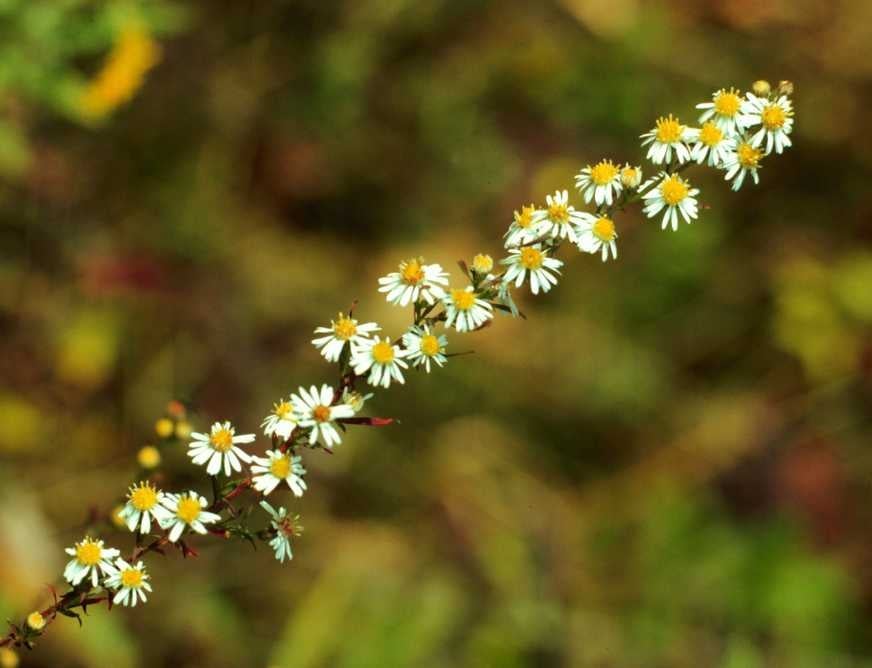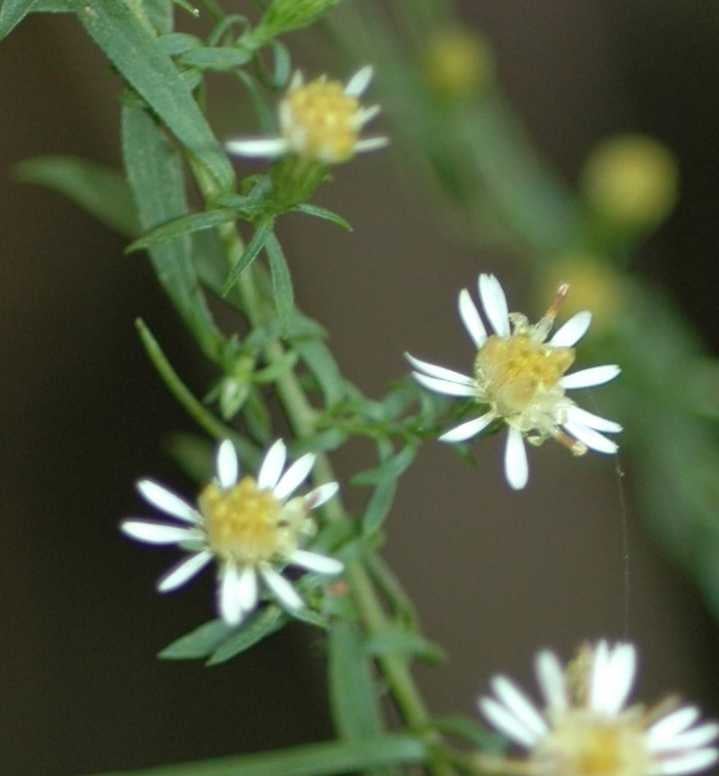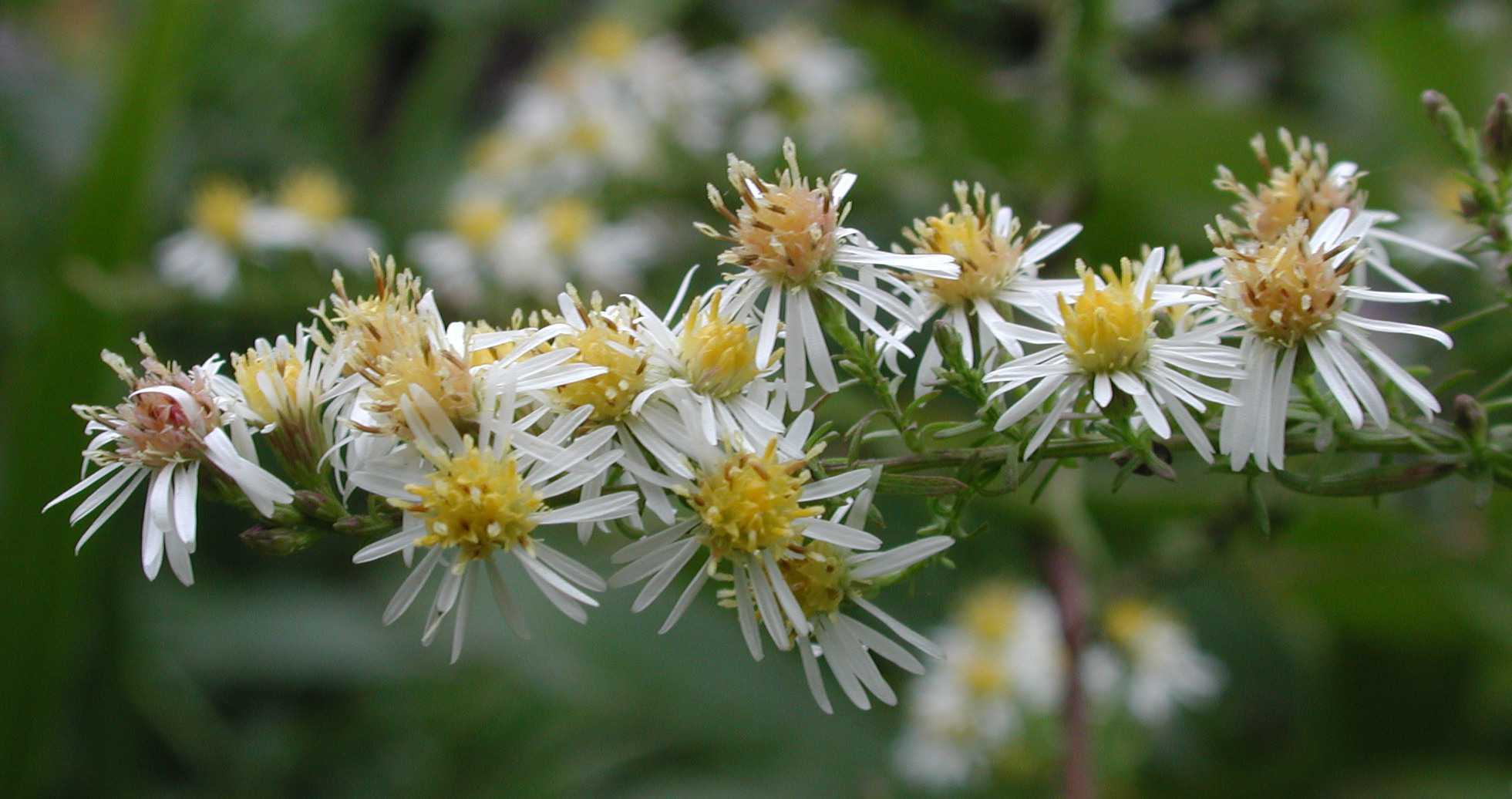Small White or Smooth White Oldfield Aster
Symphyotrichum racemosum (Ell.) Nesom is native to moist to wet, often alluvial soils, often brackish, marshes, savannas, bogs, wet meadows, prairie swales, swamps, borders of swamps, and open bottomwoods in the eastern US from southern Maine to Illinois south to northern Florida and east Texas (Brouillet et al. 2006; FNA). Reports for the species from New Brunswick and Ontario are likely for plants of Sy. dumosum or Sy. lateriflorum, which are close relatives of S. racemosum. The disc floret corolla lobes of S. racemosum are 0.5-1 mm long and shorter than those of S. lateriflorum. The species was treated as Aster vimineus Lam. for many years but that name was misapplied. Aster dumosus L. var. subracemosus Torr. & A. Gray is a synonym and includes plants with heads on longer peduncles and branches than the typical short peduncle form. The species includes diploids (2n=16) and tetraploids (2n=32). Semple et al. (2024) summarized all previously published chromosome counts and reported new counts for the species and presented a cytogeography map of all counts for S. racemosum.
Brouillet, L., J.C. Semple, G.A. Allen, K. Chambers and S. Sundberg. 2006. Symphyotrichum Nees. pp. 465-539. In Flora North America Editorial Committee, eds. Flora of North America. Vol. 20. Asteraceae, Part 2. Astereae and Senecioneae. Oxford University Press, New York.
Semple, J.C., J.G. Chmielewski, A. Bouchard, and L. Brouillet. 2024. The cytogeography Symphyotrichum lateriflorum, S. ontarionis, S. racemosum, and S. tradescantii (Asteraceae: Astereae). Phytoneuron 2024-68: 1–20.
Last revised 15 May 2025 by J.C. Semple
© 2025 J.C. Semple, including all photographs unless otherwise indicated
1-4. Symphyotrichum racemosum. 1. Robust plant, Semple 11627, North Carolina. 2. Inflorescence branch, Semple & Chmielewski 6001, Northampton Co., North Carolina. 3. Heads, Semple 11551, Powell Co., Kentucky. 4. Heads," Golden Spray" cultivar, garden Waterloo, Ontario.







